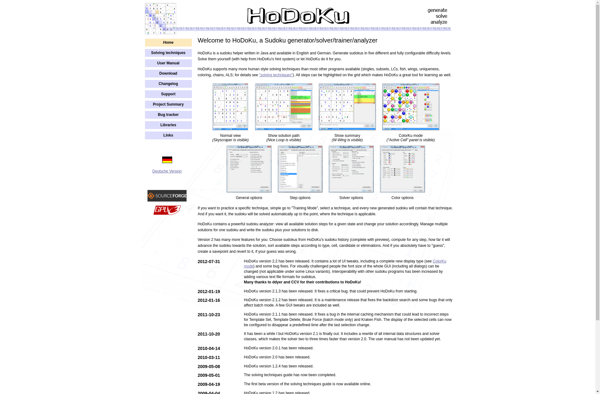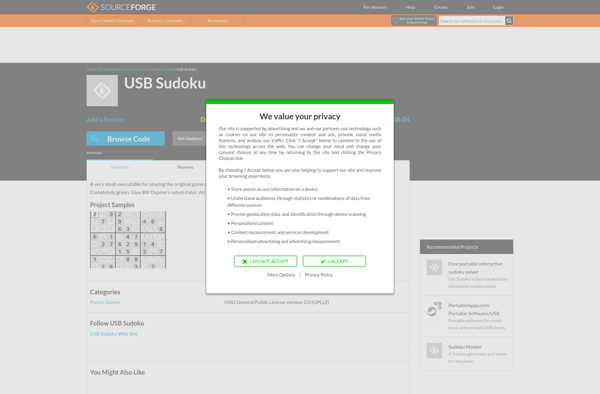Sudoku

Sudoku: Logic-Based Number Placement Puzzle Game
A 9x9 grid puzzle game where each column, row, and 3x3 box must contain the numbers 1-9 only once, requiring logical thinking and problem-solving skills.
What is Sudoku?
Sudoku is a logic-based, combinatorial number-placement puzzle. The objective is to fill a 9×9 grid with digits so that each column, each row, and each of the nine 3×3 subgrids that compose the grid (also called "boxes", "blocks", or "regions") contain all of the digits from 1 to 9.
The puzzle setter provides a partially completed grid, which typically has a unique solution. Completed games are always a type of Latin square with an additional constraint on the contents of individual regions.
Sudoku was popularized in 1986 by Japanese puzzle company Nikoli, though similar puzzles existed before. It became an international hit in 2005. Sudoku is pronounced soo-doh-koo, although in English-speaking countries it is often pronounced soo-doh-kee.
The game's immense popularity is due in part to its ease of play, using only logic, deduction, analysis and recognition. Beginners can intuit logical next steps, while advanced techniques allow extremely complex deductions. While the rules are simple, the large number of possibilities makes the puzzle extremely challenging to solve by logic alone.
Sudoku Features
Features
- Customizable difficulty levels (easy, medium, hard)
- Hint and solution features
- Timer and scoring system
- Ability to save and resume games
- Leaderboards and achievements
- Supports various game modes (classic, timed, etc.)
Pricing
- Freemium
- One-time Purchase
- Subscription-Based
Pros
Cons
Reviews & Ratings
Login to ReviewThe Best Sudoku Alternatives
Top Games and Logic Games and other similar apps like Sudoku
Here are some alternatives to Sudoku:
Suggest an alternative ❐Simple Sudoku

Sudoku Portable

HoDoKu

Yasminoku

Open Sudoku

Get Sudoku

Less Than 8
USB Sudoku
